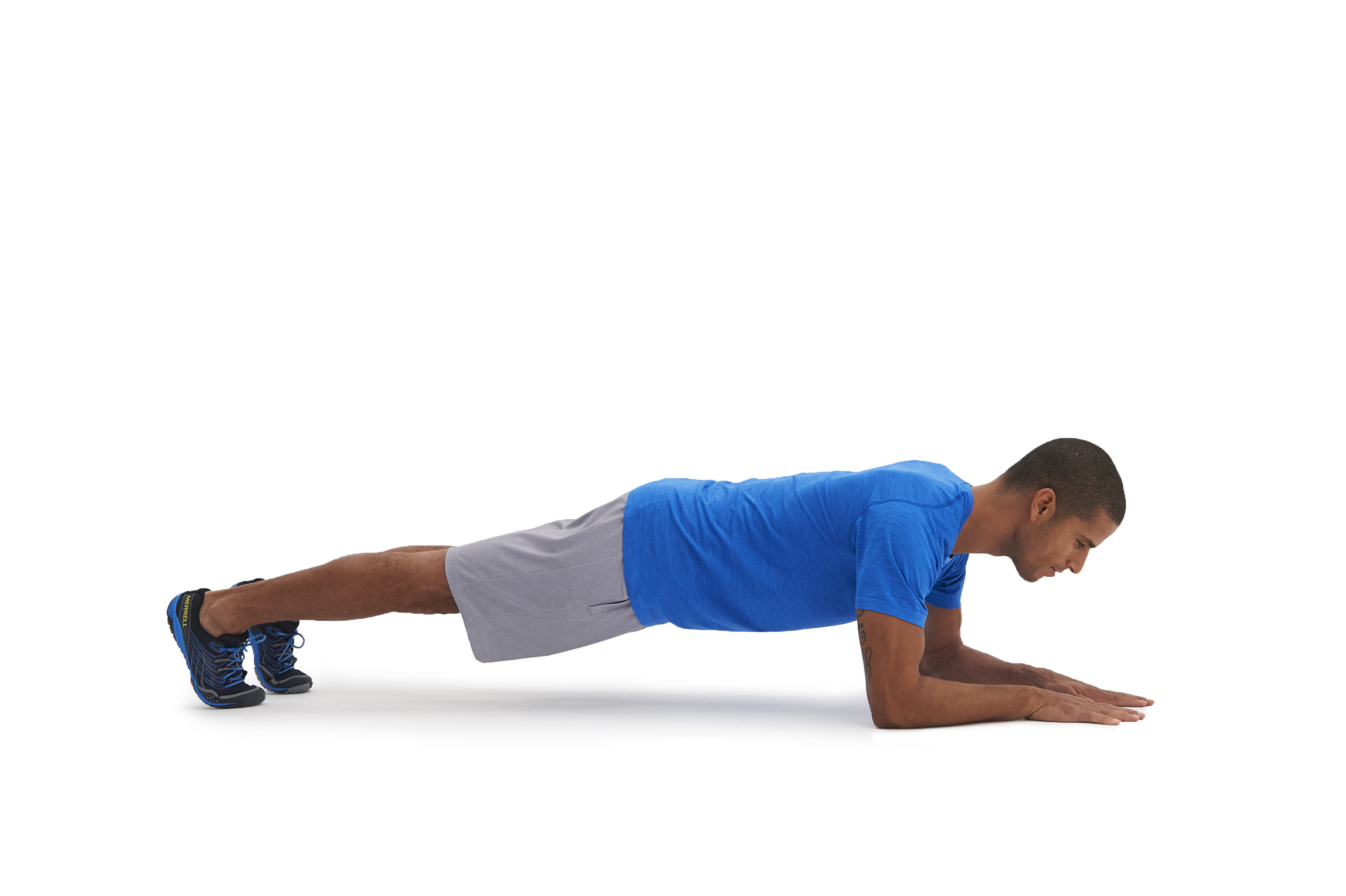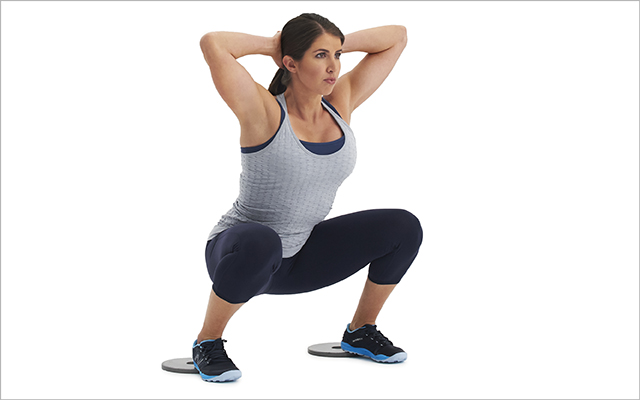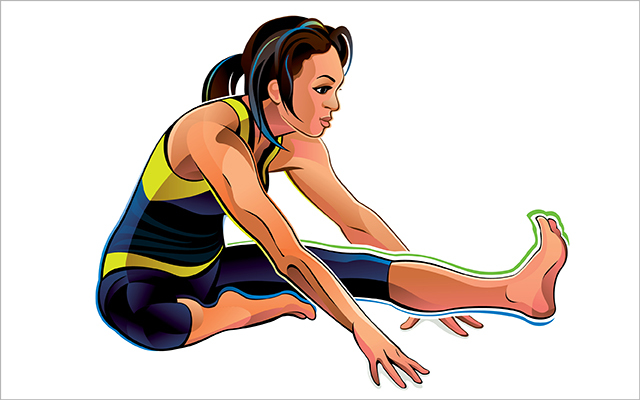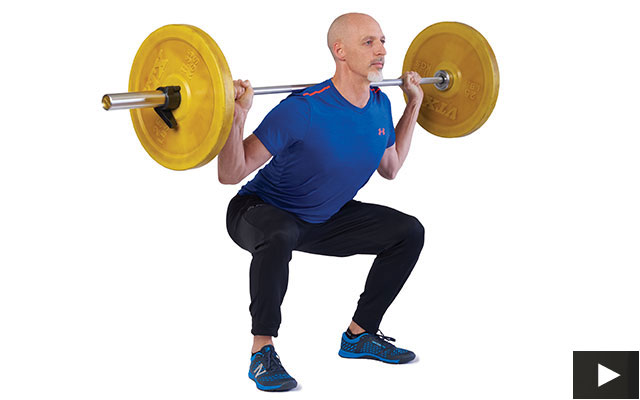Psychologists call it decision fatigue: Faced with too many options, we lose the ability to make choices at all. Starting a new fitness routine can quickly trigger this feeling of paralysis. Should I lift weights? Am I supposed to do cardio? Cycle, run, swim, row? What about plyometrics, Gyrotonic exercises, kettlebells, yoga, Pilates? So many choices, so little time and energy.
Most fitness novices fall into the same trap. “They do too much, too fast,” says Troy Jacobson, senior national director of Endurance Sports Training at Life Time. Brimming with enthusiasm, newbies often burn out quickly — or give up before they really even get going.
In the beginning, your goal should be simple: “To prepare your body to accept higher workloads in a safe and productive manner,” says Jacobson, who designs programs for just-off-the-couchers and aspiring Ironman champions alike. And “beginning” can mean exercising for the first time in your life, returning to fitness after a hiatus, embarking on a new sport, or training to reach a personal record.
Preparing your body means doing more, slowly. You’ll get better, lay the groundwork for tougher workouts ahead, and avoid injury and burnout — a common result of jumping into a new program too fast and too hard.
This 28-day workout plan is the first in a half-year program, designed by Jacobson, that will roll out in the next five issues of Experience Life. Each monthlong regimen includes a three-week ramp-up in intensity followed by a week of recovery, each month building on the one before.
“The whole program is based on a progression that leverages the concept of nonlinear periodization,” says Jacobson. That means varying your workouts subtly over the course of each week while building slowly, month by month, toward the long-term goal of greater vitality and fitness. (For more details on periodization and the program, see “Strong, Fast, and Fit: Your 2017 Action Plan“.)
Month 1 Overview
For the next month, your workout schedule will look like this:
| Week | Sunday | Monday | Tuesday | Wednesday | Thursday | Friday | Saturday |
|
1 |
Cardio Workout A (Zone 2) |
Rest | Strength Workout A | Cardio Workout A (Zone 2) |
Rest | Wildcard | Strength Workout A |
|
2 |
Cardio Workout B (Zones 2-3) |
Rest | Strength Workout A | Cardio Workout A (Zones 2-3) |
Rest | Wildcard | Strength Workout B |
|
3 |
Cardio Workout C (Zones 2-4) |
Rest | Strength Workout B | Cardio Workout B (Zones 2-3) |
Rest | Wildcard | Strength Workout B |
|
4 |
Cardio Workout A (Zone 2) |
Rest | Strength Workout A | Cardio Workout A (Zone 2) |
Rest | Wildcard | Strength Workout A |
Download Image of Sample Schedule
- Make it work for you. In this plan, workout days are Tuesday, Wednesday, Friday, Saturday, and Sunday. Feel free to move your rest and work days around according to your schedule — just make sure to adhere to the pattern of two days on, one day off; three days on, one day off.
- Keep Fridays casual. The Wildcard Day is optional, says Jacobson: “Train according to how you feel.”
- Strong and energetic: Do a light to moderate 30- to 45-minute cardio workout.
- Middling energy: 30-minute walk, easy bike ride, or other light activity.
- Fatigued: Rest.
- On rest days, rest. Recovery days are just as important as workout days, says Jacobson. Don’t skip them.
- Find your zone. Determine your work zones by figuring out your anaerobic threshold (for a DIY method, see “How to Calculate Your Anaerobic Threshold“) or by undergoing an individualized metabolic test (available at better health clubs). You can also use the RPE (rate of perceived exertion) scale, a subjective-effort scale consisting of five zones, as defined here:
| Zone | Percentage of Maximum Effort | How It Feels |
| 1 | 50%-60% | Very easy, possible to continue for long periods |
| 2 | 60%-70% | Easy, with light sweating |
| 3 | 70%-80% | Light muscular fatigue, moderate sweating |
| 4 | 80%-90% | Very heavy breathing, high muscular fatigue |
| 5 | 90%-100% | Maximum, all-out effort |
The Workouts
For both strength workouts, perform three rounds of Circuit 1, then perform three rounds of Circuit 2. Rest 15 seconds between exercises and one minute between rounds. Perform only as many good-form reps as possible in the time allotted.
Strength Workout A
| Circuit 1 | Circuit 2 |
| A. Pushups: 20 seconds
B. Prisoner Squats: 20 seconds C. Plank: 20 seconds |
A. Leg Lifts: 20 seconds
B. Seated Dumbbell Overhead Presses: 20 seconds C. Static Lunges (left leg forward): 20 seconds D. Static Lunges (right leg forward): 20 seconds |
Strength Workout B
| Circuit 1 | Circuit 2 |
| A. Pushups: 30 seconds
B. Prisoner Squats: 30 seconds C. Plank: 30 seconds |
A. Leg Lifts: 30 seconds
B. Self-Assisted Pull-ups: 30 seconds C. Static Lunges (left leg forward): 30 seconds D. Static Lunges (right leg forward): 30 seconds |
Cardio Workout A
Perform a cardiovascular exercise you enjoy — running, brisk walking, cycling, swimming, rowing, or other — at a steady state for 20 to 30 minutes.
Cardio Workout B
Perform a cardiovascular exercise you enjoy at a steady state for 25 to 35 minutes.
Cardio Workout C
Warm up for 10 minutes on a cardiovascular-exercise machine you enjoy, slowly elevating your intensity until you reach zone 3 or 4. Then, perform a one-minute sprint interval in zone 4. Rest for one minute. Repeat this work–rest cycle at least five times. When you’re finished, cool down for 10 minutes.
Month 1 Exercises
Plank

- Assume a pushup position on your elbows and forearms — feet slightly wider than shoulder width, balls of your feet on the floor, arms locked out, and body straight from your heels to the top of your head.
- Hold this position without moving for the prescribed time period.
Prisoner Squat
- With your hands interlaced behind your head and your feet parallel and slightly wider than shoulder width, slowly bend your knees and hips, sitting back until the tops of your thighs are parallel to the floor, keeping your lower back in a natural arch throughout the movement.
- Reverse the move, slowly standing, and repeat.
- If the movement feels awkward, try it with your heels elevated on 5-pound plates.
Static Lunge
- Stand with your feet together and your torso upright, and take a long step forward with your right foot.
- Keeping your torso upright and your gaze forward, slowly bend both legs until your left knee comes close to the floor.
- Pause and reverse the movement, returning to the right-foot-forward position, and repeat.
- Complete all reps with your right foot forward before switching to your left.
Pushup
- Assume a pushup position — hands and feet slightly wider than shoulder width, hands and the balls of your feet on the floor, arms locked out, and body straight from your heels to the top of your head.
- Keeping your body straight and your head in a neutral position, simultaneously bend your arms and retract your shoulder blades until your chest lightly touches the floor — or as far as possible without losing good form.
- Reverse the movement, pushing yourself back up to the starting position.
- Too tough? Perform the exercise with your hands elevated on a box, table, or bench.
Self-Assisted Pull-Up
- Place a chair, box, or bench beneath a chin-up station, high enough that your arms are bent when you stand on the bench and grasp the bar.
- Stand on the box and take an underhand grip — palms facing you — on the bar. (If you can’t reach the bar comfortably at this point, get a taller bench.)
- Simultaneously jump upward and pull yourself up with your arms until your chin clears the top of the bar.
- Hold the top position for a one-count, then slowly lower yourself back down to the bench, bending your legs slightly until your arms extend fully. Repeat for the prescribed time period.
Seated Dumbbell Overhead Press
- Sit upright, holding two dumbbells at shoulder height, palms facing forward or slightly inward. (For advice on how much weight to use, go to “Expert Answers on Figuring Out How Much Weight to Lift“.)
- Keeping your torso vertical, exhale and press the dumbbells to arm’s length overhead.
- Slowly lower the dumbbells back to the starting position and repeat.
Leg Lift
- Lie on your back on a mat and press your lower back firmly into the floor, keeping it there for the duration of the movement.
- Lift your head slightly off the floor and extend your arms overhead, keeping your upper arms close to your ears.
- Keeping your knees extended and your feet flexed, raise your legs off the floor as high as you can.
- On a slow exhale, slowly lower your right leg toward the floor until your heel taps the floor.
- Return to the starting position and alternate legs for the duration of the set.




This Post Has 0 Comments